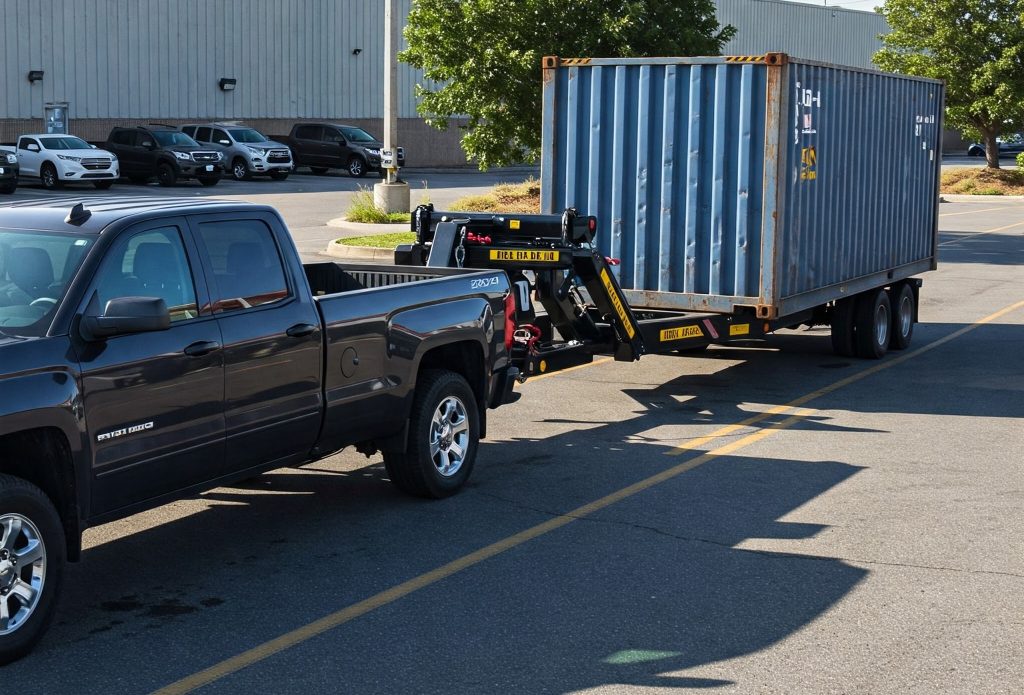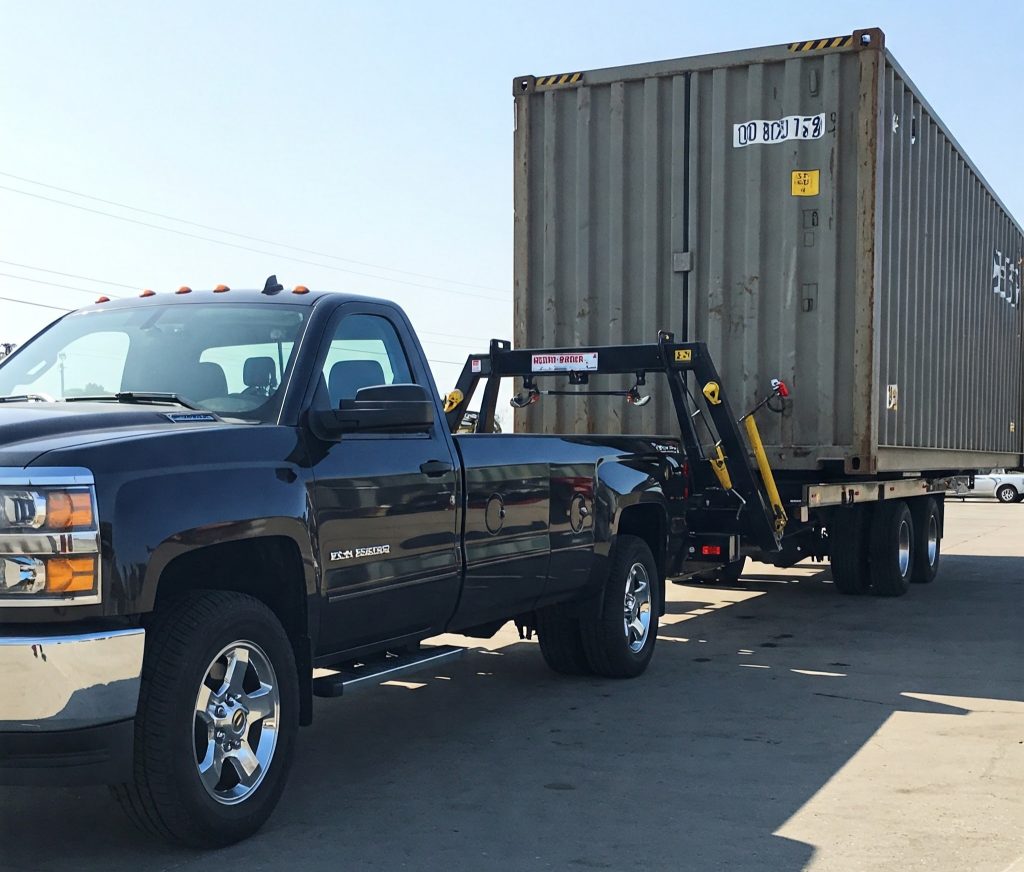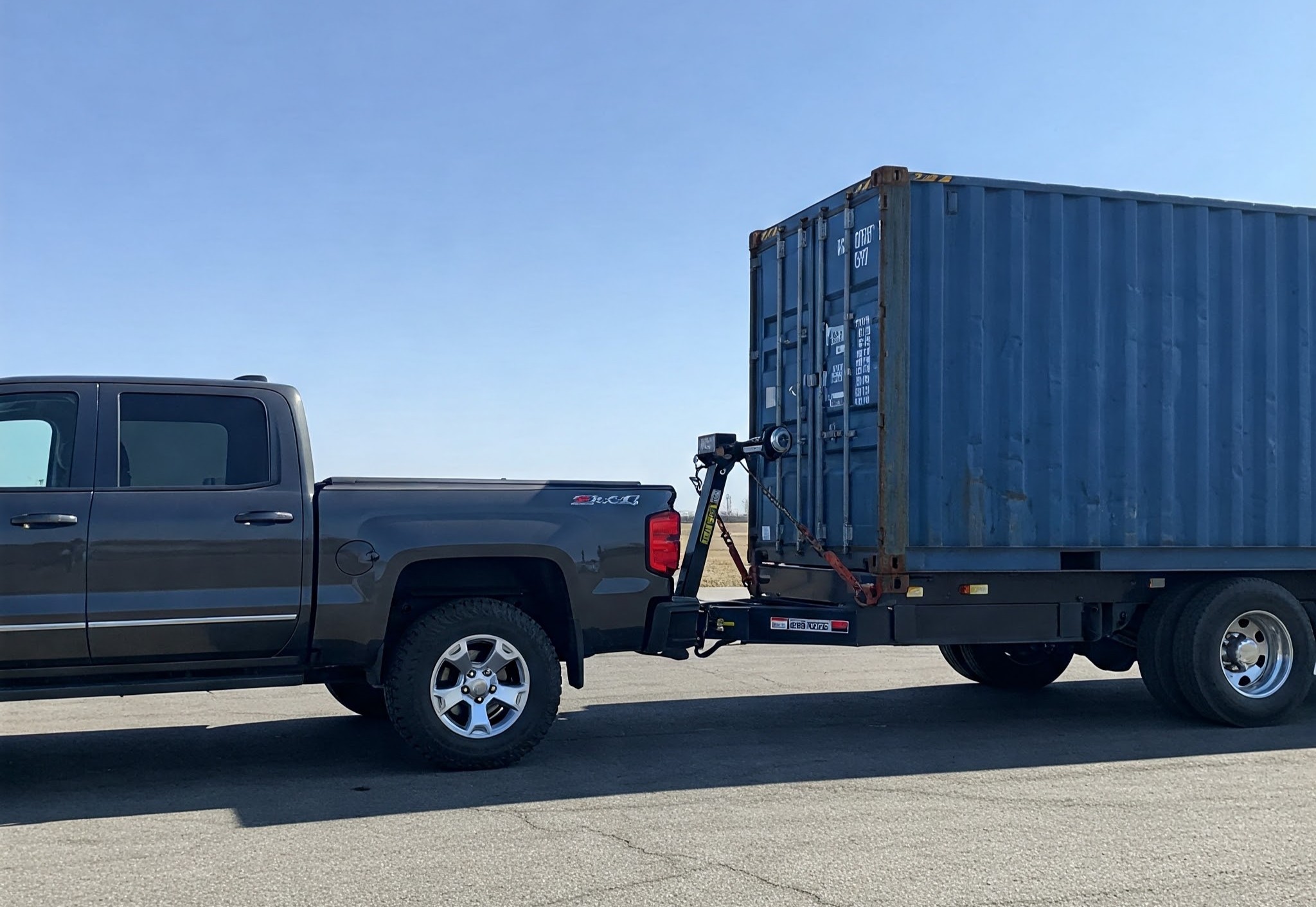When it comes to shipping container movement, platforms like heavy-duty container forklift machines are common across the industry.
However, there are moments when these machines are impractical due to geographical and other limitations, which pushes the use of alternatives like ¾-ton trucks.
If you use these trucks to transport containers instead of with forklifts, attaching wheels to the container and using a tow bar kit can work.
Although attaching wheels to shipping containers seems uncommon, it’s one of the best practices for shipping container movement. Read here!
Also Read: Shipping Container Shop for Stadium Concessions: A Guide
How Installable Wheels Become Important in Moving Shipping Containers

While shipping containers are durable and secure, their considerable weight makes them difficult to move without heavy machinery like cranes or forklifts.
Installable wheels provide a practical alternative for relocating containers over short distances without requiring large-scale equipment.
Attaching wheels to a container’s lower corner castings makes it easy to pull the container using a towing vehicle such as a forklift or tractor.
Installable wheels are beneficial in areas with high movement activities such as construction sites or warehouses.
For instance, containers used as temporary storage units or mobile workshops often must be repositioned to accommodate changing project layouts or operational needs.
Wheels allow for quick adjustments, saving time and labor while reducing the risk of workplace injuries associated with manual handling.
In addition, installable wheels are crucial for navigating uneven terrain. Air-filled pneumatic wheels, for example, make it possible to move containers across rough outdoor surfaces.
Key Features of Shipping Container Wheels and Tow Bar Kit
Shipping Container Wheels
Container wheels come in various types to suit different environments:
- Fixed Wheels: These are permanently affixed in one direction and are ideal for moving containers in straight lines over long distances within facilities like warehouses.
- Removable Wheels: Designed for temporary use, removable wheels offer portability and maneuverability without permanently altering the container’s structure.
- Pneumatic Wheels: Air-filled tires absorb shocks, provide a smooth ride on uneven terrain, and are useful in outdoor settings like construction sites.
Many wheel systems also include additional features like braking mechanisms for safety during loading or unloading operations.
Tow Bar Kits
Tow bar kits complement container wheels by providing a secure connection between the container and the towing vehicle.
These kits’ key features include:
- Pivoting Arms: These arms attach to the container’s ISO corner castings, ensuring compatibility with standard shipping container designs.
- Adjustable Lengths: Tow bars often have multiple pinholes to adjust their length based on clearance requirements during towing operations.
- Foldable Design: Foldable tow bars are compact and easy to store when not in use, making them practical for facilities with limited space.
- Heavy-Duty Construction: Built from reinforced steel or other durable materials, tow bars can handle the significant weight of loaded containers without compromising safety.
Together, container wheels and tow bar kits form a complete system that enables the safe and efficient movement of shipping containers.
How to Use Shipping Container Wheels
Using shipping container wheels is straightforward but requires proper preparation to ensure safety and efficiency:
Inspect the Container
Before attaching wheels, inspect the container’s lower corner castings for any damage or obstructions that could interfere with installation.
Attach the Wheels
Securely fasten the wheels using brackets or clamps designed for your specific wheel kit model. Ensure they are evenly distributed to maintain balance during movement.
Install the Tow Bar
Attach the tow bar to one end of the container and connect it to your towing vehicle’s hitch point.
Check Load Distribution
Ensure that the weight inside the container is evenly distributed to prevent tipping or instability during transport.
Test Movement
Before towing the container over long distances, test its mobility by moving it a short distance at a low speed.
Operate Safely
Maintain moderate speeds during towing and avoid sharp turns or sudden stops that could destabilize the container.
Remove After Use
Once you’ve relocated the container, detach the wheels and tow bar if they’re no longer needed.
Regular maintenance is also essential for keeping your wheel system in good condition. Clean the wheels after use to remove dirt or debris, lubricate moving parts periodically, and inspect for signs of wear or damage.
Benefits of Container Wheels and Tow Bar Kit Over Other Movement Modes

Container wheels and tow bar kits can be useful in the following situations:
Cost Efficiency
Using container wheels and tow bar kits eliminates the need for expensive machinery like cranes or forklifts in certain situations.
This reduces equipment rental costs while providing an affordable solution for short-distance container movement.
Ease of Use
Installing removable wheels is straightforward and requires minimal technical expertise compared to operating heavy machinery.
Tow bar kits are equally user-friendly with simple attachment mechanisms that ensure secure towing.
Flexibility
Unlike stationary containers that require specialized equipment for relocation, wheel-mounted containers can be moved easily between locations using standard towing vehicles like tractors or forklifts.
Time Savings
The ability to quickly attach wheels and tow bars allows for faster repositioning of containers compared to traditional methods involving cranes or manual lifting.
This efficiency speeds up operations in warehouses, loading docks, or event setups.
Safety
Manual handling of heavy containers poses risks such as injuries from lifting or accidents during transport.
Container wheel systems reduce these risks by enabling controlled movement with minimal physical effort.
Adaptability to Terrain
Different types of wheels cater to varying terrains such as pneumatic wheels excel on rough ground, while solid rubber wheels perform well indoors, making this system adaptable to diverse environments.
Also Read: Cold Storage Solutions vs. Chest Freezers: Which to Pick
Conclusion
Because performing shipping container movement properly is key to keeping the container safe during freight, using the best tools at all times is necessary. To ensure the container itself is secure by default, contact Tradecorp today to secure the container! With its decades-long dedication to designing and building the industry’s best containers, Tradecorp always ensures all its containers meet the strictest industry standards.


